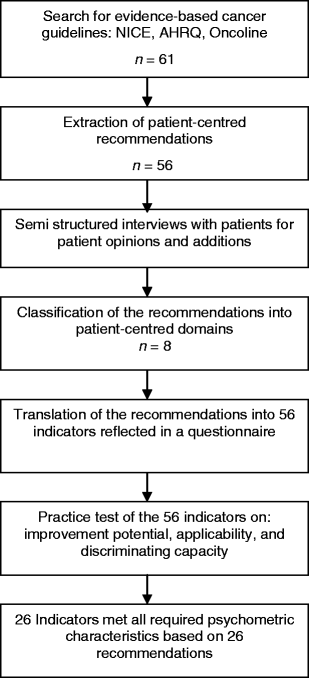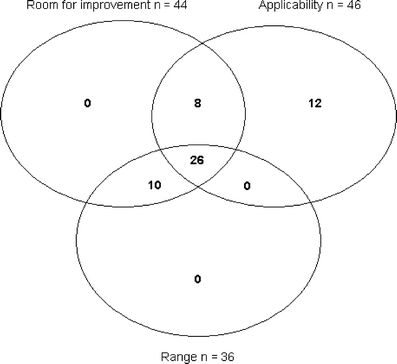Development of indicators for patient-centred cancer care
- PMID: 19387693
- PMCID: PMC2778774
- DOI: 10.1007/s00520-009-0638-y
Development of indicators for patient-centred cancer care
Abstract
Purpose: Assessment of current practice with a valid set of indicators is the key to successfully improving the quality of patient-centred care. For improvement purposes, we developed indicators of patient-centred cancer care and tested them on a population of patients with non-small cell lung cancer (NSCLC).
Methods: Recommendations for patient-centred care were extracted from clinical guidelines, and patients were interviewed to develop indicators for assessing the patient-centredness of cancer care. These indicators were tested with regard to psychometric characteristics (room for improvement, applicability, discriminating capacity and reliability) on 132 patients with NSCLC treated in six hospitals in the east Netherlands. Data were collected from patients by means of questionnaires.
Results: Eight domains of patient-centred cancer care were extracted from 61 oncology guidelines and 37 patient interviews and were translated into 56 indicators. The practice test amongst patients with NSCLC showed the most room for improvement within the domains 'emotional and psychosocial support', 'physical support' and 'information supply'. Overall, 26 of the 56 indicators had good psychometric characteristics.
Conclusions: Developing a valid set of patient-centred indicators is a first step towards improving the patient centredness of cancer care. Indicators can be based on recommendations from guidelines, but adding patient opinions leads to a more complete picture of patient centredness. The practice test on patients with NSCLC showed that the patient centredness of cancer care can be improved. Our set of indicators may also be useful for future quality assessments for other patients with cancers or chronic diseases.
Figures
References
-
- Bruera E, Pituskin E, Calder K, Neumann CM, Hanson J. The addition of an audiocassette recording of a consultation to written recommendations for patients with advanced cancer: a randomized, controlled trial. Cancer. 1999;86:2420–2425. doi: 10.1002/(SICI)1097-0142(19991201)86:11<2420::AID-CNCR33>3.0.CO;2-O. - DOI - PubMed
MeSH terms
LinkOut - more resources
Full Text Sources



